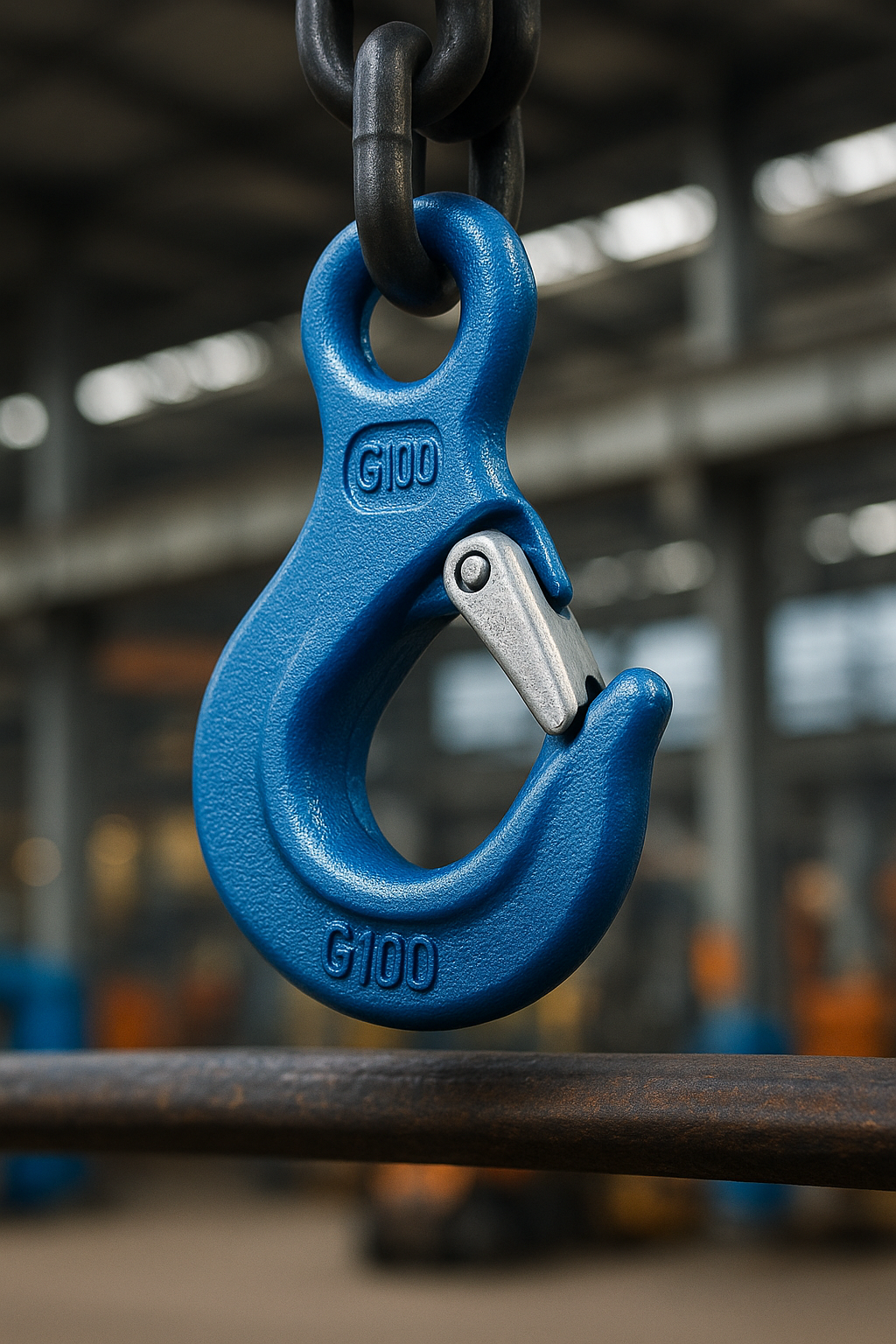Our staff will contact you within 12 hours, You can also contact us through the following ways:
Contact US WhatsApp: +86 18263873187
- Email: [email protected]
- Tel: +86 18263873187
- Web: www.lifting-chain.com
Rigging crews move hefty molds, turbines, and steel beams every shift. They trust weight chains—round-link lifting chains designed for overhead service—because links shrug heat, sparks, and point loading far better than wire rope. Still, crews must pick the right grade, diameter, and hook set or they risk overload and costly downtime. This guide turns weight-chain selection into six clear moves, backed by Topone data and EN 818 rules, so you lock in capacity, cut sling mass, and keep audits painless.
Grade | Yield MPa | Safety Factor | Proof Load | Best Field | Typical Finish |
G80 | 640 | 4 : 1 | 2.5 × WLL | Construction, rentals | Black / phosphate |
G100 | 980 | 4 : 1 | 2.5 × WLL | Production cranes | Black paint |
Stainless G80 | 640 | 4 : 1 | 2.5 × WLL | Food, chemical, marine | Polished |
Choose grade by environment and headroom. G100 lifts 25 % more at the same diameter, freeing hook space; stainless beats corrosion but matches G80 strength.
Ø mm | G80 WLL kg | G100 WLL kg | Stainless G80 WLL kg | Chain kg / m | Hook Throat min mm |
8 | 2 000 | 2 500 | 2 000 | 1.4 | 13 |
10 | 3 150 | 4 000 | 3 150 | 2.2 | 17 |
13 | 5 300 | 6 700 | 5 300 | 3.8 | 22 |
16 | 8 000 | 10 000 | 8 000 | 5.7 | 28 |
20 | 12 500 | 16 000 | 12 500 | 9.0 | 34 |
Values mirror lifting-chain.com sheets; Topone proof tests every batch at 2.5 × WLL.
List routine heaviest load—skip rare peaks.
Add rigging weight plus 10 % buffer.
Multiply by sling-angle factor (1.4 @ 45°, 2.1 @ 60° four-leg).
Pick diameter whose WLL ≥ result.
Check hook throat—leave 10 % clearance.
Log stamped ID (“8-TPN”, “10-TPN”, or “8-SS-TPN”) before the first lift.
Finish the list in a minute and never oversize or undershoot again.
Hook Type | Works With | Quick Benefit | Use It When |
Clevis grab | G80 | Fast leg shortening | Variable lift points |
Eye sling | G80 / G100 | Smooth throat support | Single-leg vertical |
Self-locking | G100 | Auto-latch under load | Personnel zones |
Stainless latch | Stainless G80 | Corrosion-proof | Acid, brine, food |
Match hook grade to chain grade—mixing downgrades capacity instantly.
Sling Angle | Factor | Tension per Leg on 10 t Load |
90° (vert) | 1.0 | 10.0 t |
60° | 1.15 | 11.5 t |
45° | 1.41 | 14.1 t |
30° | 2.00 | 20.0 t |
Never rig below 45° unless the diameter table already covers the higher factor.
Visual scan—find cracks, burns, deep nicks.
Diameter gauge—retire at 10 % wear.
Five-link pitch—scrap at 3 % stretch.
Lube light—oil weld crotches after washdown; stop rust and fretting.
Rack storage—hang chains; avoid puddles.
Good habits push G80 service past four years and G100 past three on daily lifts.
Finish | Salt-Spray Life h | Temp °C | Added Mass % | Ideal Site |
Black paint | 72 | −40→200 | 0 | Dry shops |
Mn-phosphate | 480 | −20→180 | 0 | Concrete, dusty yards |
70 µm hot-dip zinc | 1 000 | −10→120 | 3 | Ports, outdoor yards |
Bare stainless | Unlimited | −196→200 | 0 | Food plant, acid tanks |
Pay for the environment, not showroom gloss.
Assembly | Ticket USD | Life yrs | Tonnes Lifted / yr | Cost / t |
G80 16 mm + grab | 220 | 4 | 2 400 | 0.023 |
G100 13 mm + self-lock | 260 | 4 | 2 400 | 0.027 |
Stainless G80 16 mm + latch | 440 | 6 | 2 400 | 0.030 |
G100’s higher price per metre fades when you recover headroom and reduce sling mass; stainless wins in corrosive zones by year two.
 Self-locking G100 hook grips rotor and stays closed under load.
Self-locking G100 hook grips rotor and stays closed under load.
Use the grade chart, diameter table, and six-move flow to spec weight chains that lift heavier, last longer, and audit cleaner—browse full Topone specs now at lifting-chain.com.